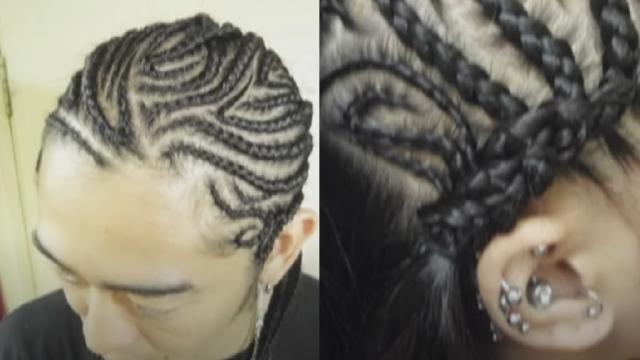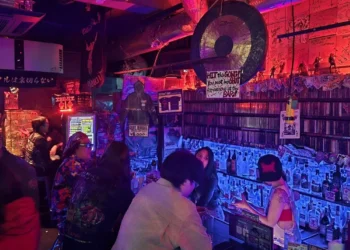No products in the cart.
Japan’s Hair Regulations: A Barrier to Inclusion and Education
Introduction: Japan’s Hair Regulations
In Japan, strict regulations governing hairstyles in schools have sparked controversy and raised questions about discrimination. These rules, ostensibly meant to enforce uniformity, have disproportionately affected students with multiracial backgrounds. Japan’s hair regulation intensifies, it’s essential to examine how these regulations impact students and the broader implications for education and inclusivity in Japan. The rigid enforcement of these rules not only undermines students’ sense of identity and cultural expression but also perpetuates harmful stereotypes and marginalization within the education system. Addressing these issues requires a comprehensive reevaluation of school policies and a commitment to fostering a more inclusive and equitable learning environment for all students, regardless of their racial or cultural background.
Rules are rules? Or discrimination?
In Japan, Japan’s hair regulations are renowned for its adherence to rules and regulations, but when it comes to hair, the line between enforcing standards and perpetuating discrimination becomes blurred. Instances of students facing punishment for deviating from traditional Japanese hair norms highlight the underlying issues of racial bias and cultural insensitivity within the education system. These incidents underscore the urgent need for schools to reevaluate their policies and foster a more inclusive environment that celebrates diversity and respects individual identity. Addressing these systemic issues requires a concerted effort from policymakers, educators, and society as a whole to promote equity and justice within Japan’s education system.
Curly hair is not allowed
In Japan, Japan’s hair regulations are renowned for its adherence to rules and regulations, but when it comes to hair, the line between enforcing standards and perpetuating discrimination becomes blurred. Instances of students facing punishment for deviating from traditional Japanese hair norms highlight the underlying issues of racial bias and cultural insensitivity within the education system. These incidents underscore the urgent need for schools to reevaluate their policies and foster a more inclusive environment that celebrates diversity and respects individual identity. Addressing these systemic issues requires a concerted effort from policymakers, educators, and society as a whole to promote equity and justice within Japan’s hair regulation education system.
Schools want proof that curls are natural
In Japan, The requirement for students to provide “real hair certificates” as proof of their natural hair texture further exacerbates the problem, placing undue burden and scrutiny on students who do not fit the traditional mold. Moreover, the banning of certain hairstyles, such as braids or ponytails, reflects a narrow understanding of diversity and cultural expression, further marginalizing students from multiracial backgrounds. These discriminatory practices not only infringe upon students’ rights but also perpetuate harmful stereotypes and contribute to a hostile learning environment that inhibits students’ academic and personal development. It’s imperative for schools to adopt inclusive policies that embrace diversity and empower students to express their cultural identity freely.
The right to education tangled in hair
In Japan, The enforcement of rigid hair regulations not only infringes upon students’ rights to self-expression but also perpetuates a culture of discrimination and forced assimilation. Students should not have to choose between their cultural identity and their education. It’s imperative for schools to recognize and respect the diversity of their student body and implement inclusive policies that celebrate rather than suppress individuality. By fostering an environment that values cultural diversity and promotes inclusivity, schools can create a more supportive and empowering educational experience for all students, regardless of their background or appearance.

“No point in being here”
In Japan, Recent incidents, such as the segregation of a half-Black and half-Japanese student during his graduation ceremony for wearing cornrows, highlight the profound impact of discriminatory practices on students’ well-being and sense of belonging. Such incidents underscore the urgent need for systemic change within Japan’s education system to address issues of racism and promote a culture of inclusivity and acceptance. By prioritizing diversity and equity in school policies and practices, Japan can create an educational environment where all students feel valued, respected, and supported in their pursuit of academic success and personal growth. It’s crucial for educators, policymakers, and society as a whole to collaborate actively in dismantling systemic barriers and fostering a more inclusive and equitable educational landscape for future generations. Japan’s hair regulations in schools serve as a stark reminder of the entrenched biases and inequalities that persist within society, highlighting the necessity for reform to ensure fairness and equal opportunities for all students.
Conclusion:
Japan’s hair regulations in schools serve as a stark reminder of the entrenched biases and inequalities that persist within society. The enforcement of such rules not only perpetuates discrimination but also hinders students’ educational experience and personal growth. Moving forward, it’s imperative for policymakers, educators, and society as a whole to confront these issues head-on and work towards creating a more equitable and inclusive environment for all students, regardless of their racial or cultural background. Only then can Japan truly fulfill its commitment to providing quality education and fostering a sense of belonging for every child. Recognizing the importance of embracing diversity and promoting inclusivity is essential for building a brighter and more equitable future for Japan’s youth.









